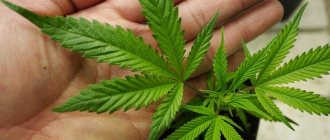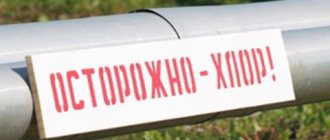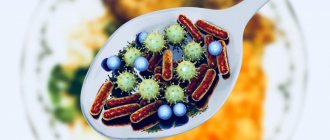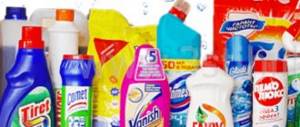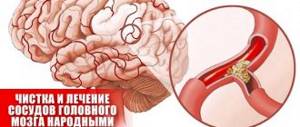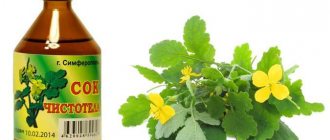Symptoms of acute poisoning
Acute poisoning is a pathological condition that occurs as a result of toxic substances or microorganisms entering the body (in food or by airborne droplets). Intoxication can cause death and dangerous complications (damage to the nervous system, acute respiratory failure, inflammation of the digestive tract). Poisoning can be caused by bacteria, fungi, microbial toxins, poisonous mushrooms and plants, gases, medications, acids, alkalis, alcohol and alcohol substitutes.
Classification of acute poisonings
The types of the disease are different, their course and severity depend, first of all, on the etiological factor. It was based on this criterion that the table presented below was created.
| Group | Subspecies | Examples |
| Household |
|
|
| Production |
|
|
| Medical (Medicinal) | Negligence or inexperience of a doctor |
|
| Biological |
|
|
| Food |
|
|
According to the international classification of diseases of the tenth revision, such types of acute poisoning as mixed type and pathologies of unknown origin are additionally described.
Consequences
The consequences of poisoning depend on the type of toxic substance and the degree of intoxication. Sometimes they manifest themselves only as temporary digestive problems, in other cases everything can be very serious. Complications may include:
- respiratory diseases (pneumonia, etc.);
- heart diseases;
- persistent headaches;
- vision problems;
- pathologies of the thyroid gland;
- renal or liver failure;
- stomach diseases;
- neurological disorders;
- exacerbation of existing chronic diseases of the heart and stomach;
- in the most severe cases, toxic shock, coma or death of the poisoned person is possible.
The consequences of acute poisoning often persist for a long time - from a year to 2 years, and some will begin to appear decades later.
Statistics
According to epidemiological data, incidence rates are approximately 3–4 people per thousand of the population. It is worth clarifying that an acute course is observed in 20% of cases, the remaining percentage occurs in chronic patients. Intoxication affects all social strata: adults, children, older people, pregnant women.
In European countries, hospitalization for poisoning occurs twice as often as compared to myocardial infarction, and the mortality rate is similar to the mortality statistics for transport accidents.
The increase in the prevalence of intoxication is due to several reasons, the main ones being environmental pollution and people’s indifference to their own health. The number of alcoholics and mentally unstable people is steadily growing, many cases associated with deliberate decisions by the victims themselves. In addition, new strains of microorganisms have emerged that are resistant to adverse conditions, disinfectants and antibacterial agents.
Causes and routes of poisoning
The development of an acute pathological process is sometimes caused not by one, but by a whole complex of negative factors, among which are:
- poor quality food;
- non-compliance with the rules of storage and transportation of goods;
- work activity without the use of personal protective equipment;
- parental negligence towards their own child;
- ignorance of poisonous mushrooms and plants that synthesize dangerous alkaloids;
- smoking;
- drinking ethyl alcohol in large quantities;
- weak immunity.
Toxins enter the body mainly through the mucous membranes of the upper respiratory tract, digestive tract, skin, and also parenterally when administered medications.
Do not forget about the endogenous type of the disease; its formation is influenced by temporal, spatial and concentration factors. They are determined by the volume of accumulated chemical compound, pus, blood supply to the affected area and the properties of the substance.
The body's ability to cleanse itself plays a certain role. For example, if the functioning of the liver or kidneys is impaired, or the rate of metabolic transformations decreases, the likelihood of an overdose of any drug increases several times.
Acute intoxication syndromes
Like any other disease, poisoning consists of many symptoms, grouped into certain groups. Taking into account the severity of a particular complex, the doctor prescribes appropriate treatment.
Gastrointestinal lesions
When poisonous foods, high doses of drugs, and chemicals are taken orally, tissue structure is disrupted, inflammatory mediators are attracted, and burns are possible. The clinic includes the following symptoms:
- severe nausea;
- vomit;
- bleeding;
- abdominal pain;
- diarrhea.
Based on the nature of the stool, specialists are able to determine the etiological factor, for example, the type of microorganism or heavy metal.
Dyspeptic syndrome
Develops against the background of exogenous damage to the digestive tract. The symptoms are not much different from the previous one; weakness, malaise, and loss of appetite are added. Sometimes, against the background of intestinal atony, prolonged constipation is possible. With immunodeficiency, dysbacteriosis and secondary infections occur: meningitis, pneumonia, candidiasis.
Cerebral
More often occurs with an overdose of antipsychotic drugs, alcohol, carbon monoxide poisoning, arsenic, mercury, lead, or infection with toxicogenic pathogens, whose poisons freely penetrate the blood-brain barrier and affect the activity of nervous tissue. Disorders such as:
- Toxic encephalopathy. Includes emotional lability, impaired coordination of movement, analytical thinking, increased fatigue, convulsions, dizziness, neurogenic fainting.
- Brain swelling. Accompanied by coma, paresis, paralysis of the limbs, increased body temperature, stiff neck and changes in some indicators of the respiratory and cardiovascular systems.
- Acute intoxication psychosis. It implies the appearance of delusions, hallucinations, increased reaction to external stimuli and a change in behavior in stable environmental conditions.
In addition, in case of poisoning with arsenic, organophosphorus substances (OPS), tetraethyl lead (TEP), and antibiotics, visual acuity is impaired and polyneuritis is formed. When using high doses of antidepressants, sleeping pills, barbiturates and similar medications, the body temperature decreases, swelling develops, reminiscent of an allergic reaction, the victim wants to sleep and loses consciousness within half an hour.
Respiratory dysfunction syndrome
It includes several areas that differ in manifestations and require specific diagnostics and therapy. The complexes of symptoms are:
- Aspiration-obstructive changes. It is formed during spasm or blockage of the airways, aspiration of vomit and retraction of the tongue. Sometimes the condition is caused by excessive mucus production and burns of the mucous membranes. Accompanied by shortness of breath, suffocation, cyanosis of the skin.
- Neurogenic disorders. They are possible due to the inhibitory effect of medications on the respiratory center or a decrease in neuromuscular patency. It is necessary to administer antidotes and connect the patient to a ventilator.
- Toxic edema or respiratory distress syndrome. It develops when inhaling toxic volatile compounds: carbon monoxide, chlorine in high concentrations, ammonia, hydrocarbons, gasoline. A large amount of protein fluid appears in the alveoli, which foams when in contact with oxygen and disrupts the functional activity of the organ. There are complaints of cough, blood in the sputum, and a feeling of lack of air.
Respiratory irritation syndrome is distinguished separately. Here, in the clinical picture, pain, sneezing, and sore throat come to the fore.
Cardiovascular
Very often, in acute poisoning, a state of shock develops, during which hemodynamic parameters change. The signs of pathology are as follows:
- pale skin;
- tachycardia or bradycardia;
- metabolic acidosis;
- drop in central venous pressure;
- arterial hypotension;
- cardiogenic pulmonary edema.
Late manifestations include dystrophic disorders of the myocardium, which can be seen with ultrasound or on an electrocardiogram.
Cholinergic
Occurs during intoxication with organophosphorus compounds, nicotine and overdose of drugs that stimulate the receptors of the same name. The syndrome affects the activity of not one individual system, but the entire organism as a whole. Signs of the disorder are:
- psychomotor agitation;
- muscle weakness;
- change in heart rate;
- urinary incontinence;
- excessive sweating;
- dyspnea.
In case of this type of poisoning, a large amount of saliva is produced in the oral cavity, the patient experiences unconditional fear, anxiety, rushes around the room, and then may lose consciousness.
Anticholinergic syndrome
It is a complex of symptoms, the opposite of the previous one. Etiology includes overdose of neurotropic substances, antihistamines, antipyretics, anesthetics and opiates. Here the person complains of such manifestations as:
- abdominal discomfort associated with constipation;
- increased body temperature;
- headache;
- chills;
- urinary retention;
- impairment of short-term memory;
- drowsiness;
- tremor of the limbs.
During a general examination, the doctor pays attention to dry skin and mucous membranes, impaired consciousness such as stupor, stupor, shallow breathing and sharp dilation of the pupils (mydriasis).
Sympathomimetic
It is a manifestation of the activation of the nervous system of the same name. It is often formed when consuming high doses of adrenaline, morphine, and cannabinoids. Among the symptoms, the most significant are increased blood pressure and heart rate, psychosis and fever.
Sympatholytic
Develops due to barbiturate intoxication. The syndrome is based on inhibition of the functional activity of the brain, which leads to respiratory failure, hypotension of skeletal muscles, hypotension, and bradycardia.
The condition requires emergency assistance, death occurs within half an hour.
Liver and kidney syndrome
In 30% of cases, acute intoxication is accompanied by structural changes in hepatocytes and glomeruli. Tissue damage is caused by two mechanisms: specific and nonspecific. In the first, blood with chemicals enters directly into the organs and has a direct effect on the cells. In the second type, ischemia develops against the background of vascular spasm, which disrupts oxygen delivery and metabolism. Both pathogenesis occur simultaneously and aggravate the course of the disease.
The syndrome consists of several characteristic symptoms:
- pain in the lower back or right hypochondrium;
- yellowness of the sclera and skin;
- increased body temperature;
- mental disorders due to hepatic encephalopathy;
- hemorrhages;
- tissue swelling;
- decrease in the volume of urine excreted or its absence.
Sometimes the disease is so severe that patients require kidney or liver removal and transplantation.
Trophic disorder syndrome
The reference books describe it as the result of all of the above conditions, during which the metabolism, enzymatic and hormonal status of the victim changes. There are three common violations of the qualitative and quantitative composition of the internal environment:
- Acidosis. Formed during poisoning with mushrooms, mercury salts, arsenic, cauterizing poisons, salicylates. Its signs: convulsions, deep rapid breathing, arterial hypotension, nausea, vomiting.
- Alkalosis. Occurs with overdose of antibiotics, diuretics, mineralcorticoids. Symptoms include headache, drowsiness, delirium, and chest discomfort resembling angina.
- Water-electrolyte imbalance. Accompanies the loss of large amounts of fluid and salts, which is possible with excessive vomiting and diarrhea. Characteristic of food poisoning. The clinical picture is variable and depends on the concentration of a particular chemical element (hyponatremia, hyperkalemia, and so on).
The syndrome is relieved by oral or parenteral administration of specific solutions and hemodialysis and plasmapheresis.
Assessment of the patient's condition
Before starting therapeutic measures, the condition of the victim should be assessed. The cause of intoxication is determined, what toxic substances were in contact with, as well as the amount and duration of stay of the harmful poison in the body.
If it is impossible to obtain reliable information from the victim, since he may be unconscious and there are no witnesses to clarify the situation, the person providing assistance must independently and as quickly as possible find out the cause of intoxication. In this case, you should pay attention to the presence of unusual or unpleasant odors, the presence of medication packages, and other things.
If the smell of gas is detected, first of all, it is necessary to protect the person providing assistance from poisoning, remove the victim to a safe place, and then begin emergency therapeutic measures.
Diagnostics
In the first stages, the doctor collects an anamnesis of the disease and conducts a general examination, which takes into account the functioning of vital organs. Next, the doctor writes out directions for several types of examinations, including:
- Instrumental analysis. Includes ultrasound of the abdominal organs, heart, plain chest radiography, ECG, MRI, CT, endoscopic methods that allow visualization of affected tissues.
- Toxicology test. It is necessary to establish the concentration of a toxic substance in biological media and assess the effect of the compound on the activity of the liver and kidneys.
- Laboratory research. It is performed for almost all diseases and involves conducting a general analysis of blood, urine, determining the number of biochemical indicators, and recording impurities in stool. In case of acute food poisoning, serological diagnosis is required - determination of antibodies to microorganisms in plasma.
In case of mass infection, specialized services are called in and are obliged to conduct their own independent investigation, determine the cause of the epidemic outbreak and punish those responsible for what happened.
First aid
Carrying out emergency measures is required to improve the well-being of the victim and reduce the risk of complications and death. The algorithm of PMP actions depends on the etiological factor, however, there are a number of general principles of pre-medical therapy, which include:
- removing poison from the cavity of the gastrointestinal tract with a weak solution of sodium bicarbonate or potassium permanganate;
- the use of sorbent, available in almost every home or industrial first aid kit;
- administration of an antidote, if one exists and is at hand;
- the use of coating agents for poisoning with concentrated synthetic chemical compounds;
- removing the patient to fresh air or a well-ventilated area in case of inhalation intoxication;
- In case of loss of consciousness, it is allowed to smell ammonia.
If alkali or acid gets on the skin, rinse the affected area under running water for ten minutes. Carefully treat the area around with a local antiseptic to prevent wound infection.
Of course, you need to call an emergency medical team, since only they are able to carry out differential diagnostics, use parenteral medications and hospitalize the person.
Antidotes
The substances used during the provision of NMP to neutralize a particular poison are quite specific, that is, they are indicated only for poisoning with one specific drug or chemical. The list of the most common means is presented below in the form of a table.
| Toxin | Antidote |
| Methyl alcohol | Ethanol |
| Chlorine | Atropine, Eufillin, glucocorticosteroid, oxygenation |
| Potassium permangantsovka | Vitamin C |
| Dichloroethane | Acetylcysteine |
| Heavy metals | Unithiol |
| Carbon monoxide | Oxygen |
In addition, in case of acute poisoning with alkali or acid, doctors recommend using a weak solution of lemon juice and soda, respectively. According to the laws of chemistry, two substances neutralize each other and a harmless salt is formed.
Treatment methods
Therapy in the first stages is carried out in a hospital setting, since victims require special care. The selection of drugs is carried out taking into account the clinical picture and diagnosis; the following drugs can be prescribed:
- glucocorticoids;
- non-steroidal anti-inflammatory drugs;
- analgesics;
- antispasmodics;
- emetics (in the early hours of intoxication);
- saline solutions;
- sorbents;
- diuretics;
- antacids;
- enzymes;
- antibiotics.
In case of psychomotor agitation, the administration of antipsychotics is required. If serious disorders of the cardiovascular and respiratory systems are observed, the person is transferred to the intensive care unit, where they inject Atropine, Euphylline, Ephedrine and other medications.
Nonspecific methods for removing toxic substances from the blood
These detoxification methods are required for severe acute poisoning. Among them are:
- hemosorption - distillation of blood through a column with a sorbent;
- forced diuresis - the use of loading doses of diuretics;
- hemodialysis – connecting the patient to an artificial kidney machine;
- plasmapheresis – plasma purification.
In some cases, transfusion of uniform elements is necessary. The donor is selected taking into account the Rh factor and blood type.
Preventive measures
It is easier to avoid poisoning than to treat it later. Preventive measures will be especially relevant for children, pregnant women and the elderly, who are very difficult to tolerate any pathological conditions.
To prevent intoxication, you should adhere to simple rules that need to be brought to the “automatic” level. Such measures include the following recommendations:
Always wash your hands thoroughly: not only after returning from the street, but also while preparing food, going to the toilet or doing any housework.- Maintain hygiene in the kitchen. Change towels periodically, use only clean knives and boards.
- Carefully monitor expiration dates. Never violate food storage rules, otherwise they may spoil before their expiration date.
- Never eat raw meat or poultry. All raw foods must be cooked.
- Avoid questionable cafes and restaurants. Eliminate all snacks on the go.
- Always use disinfectant wipes.
It is especially important to teach your child all the rules of hygiene . The student should always have wet and dry wipes with him.
Acute poisoning has many unpleasant symptoms, so preventive measures should be followed to avoid such a pathological phenomenon.
Rehabilitation
It is considered the last stage of treatment of the disease. The main emphasis here is on diet, giving up bad habits and physical therapy methods.
Nutrition after discharge from the hospital involves regular split meals in small portions. Patients are prohibited from eating fried, fatty, spicy, smoked foods, and canned food. At first, fresh vegetables and fruits are restricted, as they contain organic acids that irritate the walls of the stomach and intestines. You cannot drink alcohol, coffee or carbonated drinks. For two weeks, the diet consists of pureed soups, decoctions, porridges, cutlets, fish, cooked in the oven or steamed. To restore your own microflora, it is recommended to actively consume fermented milk products.
To improve their well-being, patients are offered balneotherapy (hydromassage, mineral baths), electrophoresis, ultrasound, magnet or laser.
Rehabilitation period
Healthy eating
During the rehabilitation period, you need to adhere to a healthy diet (drink mucous decoctions, give up alcohol, spicy and fatty foods, enrich your diet with fermented milk products), take probiotics and eubiotics (Linex, Hilak Forte, LBB) and use folk remedies. For food toxicosis and toxic infections, baths and saunas help (allowing toxic compounds to be removed from the body), marshmallow infusion, rosehip decoction, lemon water and ginger tea.
